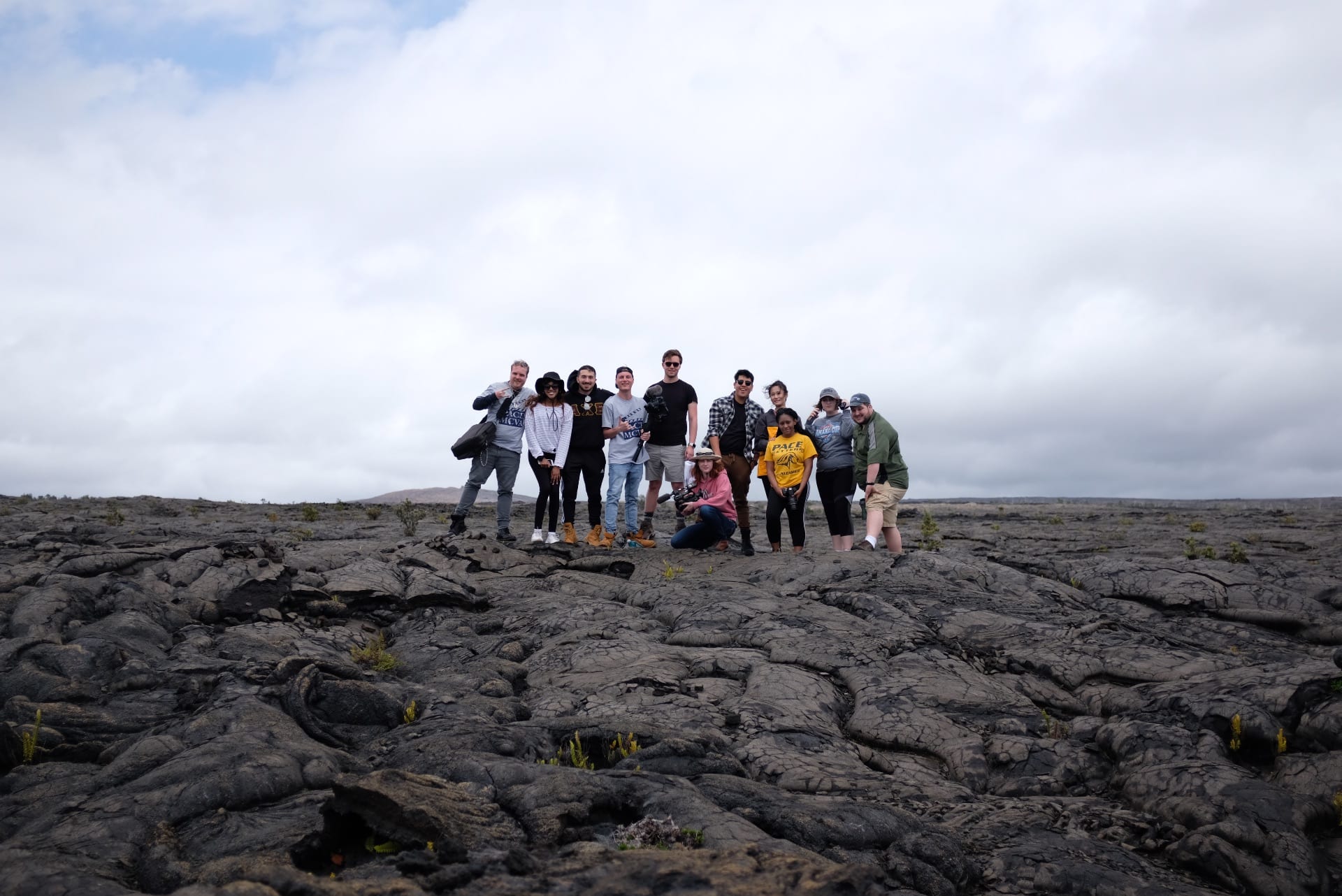The longest day of production, the day we have been preparing for all semester, has come to a close. Our experience at Volcano National Park was well worth the sunburn and exhaustion felt by the entire crew. We were finally able to sightsee and hike around the volcanoes we have been vehemently researching and learning about. Our morning began with a set of interviews right at Kilauea’s Visitors Center that overlooked the volcano.

One of our interviewees, Jessica Faracane, is a Park Ranger. She spoke about her role at the park and the part she played in the Kilauea eruption. She was involved with all social media and public relations aspects when the eruption occurred. The park was closed for a total of 135 days. Even Jessica, who spends her days in the park, was shocked by the unprecedented nature of Kilauea and its last eruption.
We also spoke to Tim Freeman, a Philosophy professor at the University of Hawaii. He, along with many of our other interviewees, spoke to us about climate change and statehood. These recurring themes will be featured in our film. Freeman gave us a deeper understanding of the Hawaiian culture and their connection to nature. This deep connection is routed in their sense of identity.
After the interviews, half of the group went and visited a lava field, where there was fragile rock that had been once covered by lava. We managed to get additional footage of the area before visiting the Holei Sea Arch on the southern coast of the Big Island. The other half of the class went on a hike on a trail that stemmed from the Visitors Center and got footage of the scenic overlooks. The summit grew over twice its size since the eruptions in May.

After a picnic style lunch that the crew shared outside in the park, we split back up for more footage. Half of the crew went on a two hour hike, led by Tim Freeman, to see the crater of Mauna Ulu. This 200 foot deep crater was something that was indescribable and breathtaking. We took as much footage as we could so our viewers can relive the experience that we had. The other crew walked along the Devastation Trail, a winding path with a scenic route of the area that was once a rainforest. The rainforest was destroyed after the 1959 Kilauea Iki eruption.


The two teams came together the evening at Nona Wilson’s house. Wilson is a local resident in Volcano who invited the team over for drinks and pupu, or finger foods. When we arrived, we were graciously welcomed into her home, greeted by her husband, son, and neighbors. This was a rare opportunity for us to get to know the people of the Hawaiian culture without the pressure of a camera during production. They were extremely thoughtful, giving us a tour of their property and letting us relax in the comfort of their home.
Together, we went to the Volcano Arts Center to interview locals at the series called Stories of the Summit. Once there, we had four camera crews getting unique stories and the people’s perspectives. Jeffrey Judd spoke to one of our crews about his long history with the volcanoes. He used to work in Volcano National Park and was the first man ever recorded to have fallen into molten lava and survive. Judd was sampling the lava shortly after an eruption, which is something he was used to doing. But this time, he fell in and stumped the doctors when they saw his third degree burn; they were smooth and white, all of his nerves burned off of his legs. The doctors gave him burn cream used for soldiers in the Vietnam war to combat burns from napalm bombs for his recovery.
By the time we were finished with our last interviews of the night, it was late and we were all tired from our day. As much as we were prepared for our scheduled day, nothing could have prepared us for the magnificent landscape views that we were surrounded by all day. We ended the day with the volcano views in our heads, only for us to wake up tomorrow morning to see the devastation caused in Leilani Estates and the Puna District.






